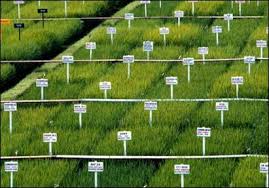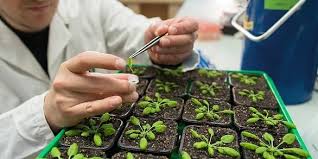The procedure for selection involves the retention of superior, healthy, and good-looking plants from a mixed population. This can be done in different ways. In mass selection, a large number of plants with similar phenotypes are selected, and their seeds are mixed together to constitute a new variety.
In other words, mass selection is a breeding method that improves the general performance level of a population by selecting and bulking outstanding individuals from a population.
Improvement of Local Varieties through Mass Selection
Local varieties sometimes become mixed, which may result in differences in flowering, maturity time, disease resistance, plant height, etc. The elimination or rogueing of undesirable plants helps to obtain a more uniform variety, which can be achieved through mass selection.
Read Also: CAUSES AND SOLUTIONS OF EGG GLUT IN EGG PRODUCTION
Purification of Existing Pureline Varieties Using Mass Selection

The maintenance of purity in existing pureline varieties is achieved through the mass selection procedure. Over time, pureline varieties may become variable due to mechanical mixtures, natural hybridization (crossing), or mutation (sudden variation in the hereditary material of a cell). Through regular mass selection, the purity of these pureline varieties is maintained.
Production of New Varieties from Heterogeneous Local Landraces
By increasing the frequency of superior genotypes, the population character can be changed. This change is a function of heritability and the number of genes influencing the trait under selection.
In the case of cross-pollinated crops, such as maize, inbreeding (crossing closely related organisms) must be avoided, as it leads to a loss in vigor and yield. In mass selection, several plants are selected, and their seeds are mixed together to raise the next generation, thus minimizing inbreeding.
Methodology for Mass Selection Without Progeny Testing
1st Year: Selection of Plants Based on Phenotypic Performance
Select many plants based on their performance and phenotypic traits such as vigor, plant type, disease resistance, or other desirable characteristics. Harvest and compose/bulk the seeds.
2nd to 4th Year: Repetition of Selection Process
Repeat the process from the first year, then compose/bulk the seeds again. The composed seed will constitute the new improved population.
Advantages of Mass Selection in Crop Breeding
1. Simple to follow: The mass selection method is straightforward and easy to implement.
2. Quick availability to farmers: New varieties can reach farmers more quickly due to the simplicity of the process.
3. Time and effort reduction: Mass selection reduces the need for extensive testing, making the breeding process less time-consuming.
4. Stability across environments: Since a large number of plants are selected, the variety is more stable in performance across different environments.
Read Also: Feed Lot Fattening of Rams Practice
Traits Best Suited for Mass Selection

1. Traits easily identified through visual observation or simple tests: Examples include determinate and indeterminate growth habit in soybean, plant height, seed color, flower color, etc.
2. Traits with high heritability (h²) values: Traits with higher heritability are more likely to be expressed and can be easily identified during selection.
Note: New genotypes or varieties are not created in either pure-line or mass selection. The improvement simply involves the isolation of superior genotypes present in a mixed population.
Mass selection can be used to purify existing varieties, and the improved variety can reach farmers quickly. This method proves effective in stabilizing traits within a population and enhancing overall crop performance.
Do you have any questions, suggestions, or contributions? If so, please feel free to use the comment box below to share your thoughts. We also encourage you to kindly share this information with others who might benefit from it. Since we can’t reach everyone at once, we truly appreciate your help in spreading the word. Thank you so much for your support and for sharing!

